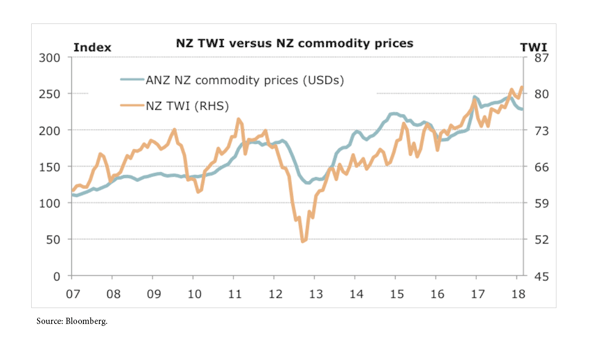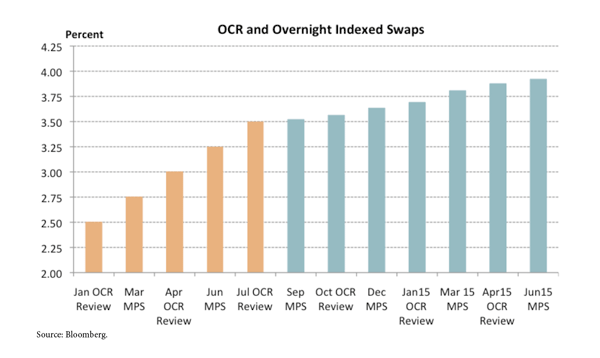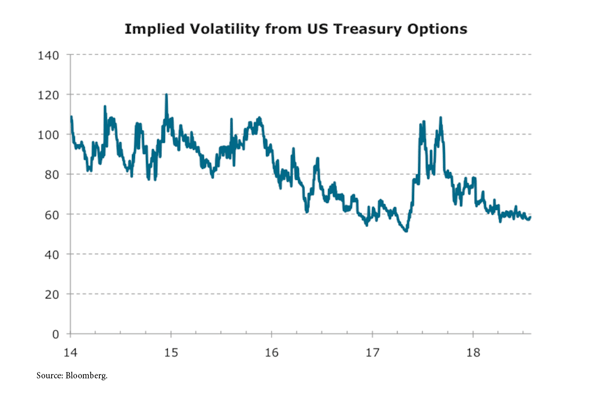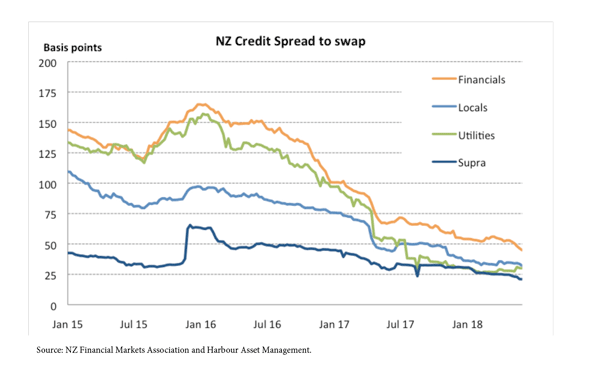A finely balanced RBNZ decision
Harbour Asset Management reckons its for for a breather in New Zealand interest rates and credit. Find out why.
Monday, August 11th 2014, 2:39PM
by Harbour Asset Management
The RBNZ’s July Official Cash Review turned out to an evenly balanced decision, weighing strong momentum in early 2014 vs a recent softening in local data.
The RBNZ had paved the way for a 25 basis points hike with a strong signal in their June Monetary Policy Statement. However, since then the NZ economy had shown some signs of cooling:
- Business confidence had fallen from its lofty highs at the beginning of the year, consistent with the economy moving into a more moderate growth path.
- Data suggested some of the heat continued to come out of the housing market, reducing fears that this part of the economy is overheating across the country.
- Q2 CPI was softer than market expectations, putting annual inflation at just 1.6%, keeping inflation comfortably below the mid-point of the CPI target since Graeme Wheeler's tenure.
- Importantly, commodity prices had fallen much faster since June than the RBNZ expected, continuing a decline that began at the start of the year, and reducing future farm incomes and inflation pressures.
- Finally, despite the fall in commodity prices, the NZ Dollar had risen since the June MPS, putting downward pressure on future inflation.
NZ TWI versus NZ Commodity Prices

Source: Bloomberg.
On balance, the RBNZ decided to meet market expectations by increasing the OCR by 25 basis points to 3.50%.
However, they surprised many in the market by saying that “it is prudent that there is now a period of assessment before interest rates adjust further”. This was a much more explicit signal than most had expected. It reflects that, with the local economic data cooling, the RBNZ is now ahead of the curve, and so has time to reflect and observe what impact lifting the OCR from 2.50% to 3.50% over 4 months has on the economy. We believe this puts the RBNZ on the sidelines for around 6 months, depending on the economic data.
OCR and Overnight Indexed Swaps

Source: Bloomberg.
Unjustified, unsustainable and potential for a hard fall
The RBNZ also surprised the market by describing the level of the NZ dollar as “unjustified and unsustainable and (that) there is potential for a significant fall”.
Before deciding to intervene in the FX market the RBNZ is required to satisfy that all of the following criteria are met:
- the exchange rate must be exceptionally high or low;
- the exchange rate must be unjustified by economic fundamentals;
- intervention must be consistent with the Policy Targets Agreement (PTA); and
- conditions in markets must be opportune and allow intervention a reasonable chance of success.
The RBNZ has effectively taken a small step closer to FX intervention by ticking off 3 out of 4 of these criteria, leaving consistency with the PTA the only one yet to be met.
It would have been very odd for the RBNZ to have intervened to lower the NZ dollar straight after increasing the OCR. However, with a signal that the OCR is on hold for a period, it paves the way for them to intervene in coming months in a scenario where the NZ economy cools much further while the NZ dollar remains stubbornly high.
The US Federal Reserve hold the line
Continuing a theme of 2013 and 2014, the New Zealand economy continues to be out of sync with the rest of the world.
As we move into 2014 H2, it was a case of local economic growth moderating at a time when the global economy led by the United States showed continued signs of improving economic growth. US GDP bounced back to 4% in Q2, the US ISM survey at 57.1 is well into expansionary territory, and US non-farm payrolls are averaging a very healthy +250,000 per month.
Despite this, the US Federal Reserve has been careful not to signal any change in their current plan of tapering Quantitative Easing (QE) at the rate of $10bn per meeting, and to start lifting overnight interest rates in the middle of 2015. Inflation and wage pressures have remained well behaved for now, which also provides some breathing space. This has helped keep the US 10 year rate anchored in a narrow range around 2.50%.
However, we are conscious that, with the passage of time, the evidence for removing monetary stimulus in the United States is growing, and that at some point the US Federal Reserve will have to acknowledge this evidence. We see a change in signal from the US Fed as a key candidate for increasing volatility in fixed interest market from its current lows, much the same way that Bernanke’s comments in mid 2013 sparked the ‘Taper Tantrum’.
Implied Volatility from US Treasury Options

Source: Bloomberg.
A time to reflect on credit markets too
In this environment of significant global monetary support and improving global economic growth, credit spreads have narrowed substantially over the past 3 years.
This is a global trend that has been amplified locally in New Zealand by a relative lack of corporate bond supply and steady demand from KiwiSaver funds and others. Not only have corporate bond spreads have narrowed, but there has been a notable convergence in corporate bond spreads across different sectors and credit ratings.
NZ Credit Spread to swap

Source: NZ Financial Markets Association and Harbour Asset Management.
We remain comfortable being invested in New Zealand corporate bonds, given strong corporate balance sheets and the solid economic backdrop.
However, the reduction and convergence of credit spreads over the past 3 years means that investors in corporate bonds are receiving much less compensation against the potential re-emergence of market risk and volatility.
It is not our central scenario that corporate bond markets come under pressure. However, in our opinion, valuations have now moved enough to change the risk-reward trade-off. We therefore believe it is appropriate to take a more cautious approach to investing in corporate bonds, especially where securities have low credit ratings, are sub-ordinate to other securities, have long credit duration, or are prone to illiquidity in stressed conditions.
Conclusion
At the long end of the yield curve, we continue to see the medium-term risk skewed towards rising yields globally.
There may not be an immediate catalyst for long-term bond yields to jump higher, with US economy still using up excess capacity following the GFC and Janet Yellen still a signed-up Inflation Dove. However, as evidence continues to build of post GFC repair, less spare capacity in the labour market and a less benign inflation outlook, we expect the FOMC to eventually come around and signal that US interest rates need to rise.
By contrast, in New Zealand we are expecting short term interest rate and credit markets to take a breather.
With New Zealand economic growth moderating from a swift pace earlier in the year, we believe the RBNZ is now ahead of the curve, and so has time to reflect and observe what impact lifting the OCR from 2.50% to 3.50% over 4 months has on the economy. This gives us some confidence to remain invested in the 2 to 3 year part of the NZ yield curve to benefit from the yield pick-up available in a period of interest rate stability.
In the NZ credit market, we are also expecting the market to take a breather after a remarkably strong run over the past 3 years. Strong corporate balance sheets and a solid economic backdrop, give us confidence to remain invested. However, in our opinion, valuations have now moved enough to change the risk-reward trade-off. This points us towards a more cautious approach, especially where securities have low credit ratings, are sub-ordinate to other securities, have long credit duration, or are prone to illiquidity in stressed conditions.
Christian Hawkesby
Director,
Head of Fixed Interest & Economics
Harbour Asset Management
Important Disclosure Information
Important disclaimer information
| « World equity markets – bubble territory? | Is it time for something new from the world's central bankers? » |
Special Offers
Comments from our readers
No comments yet
Sign In to add your comment
| Printable version | Email to a friend |









